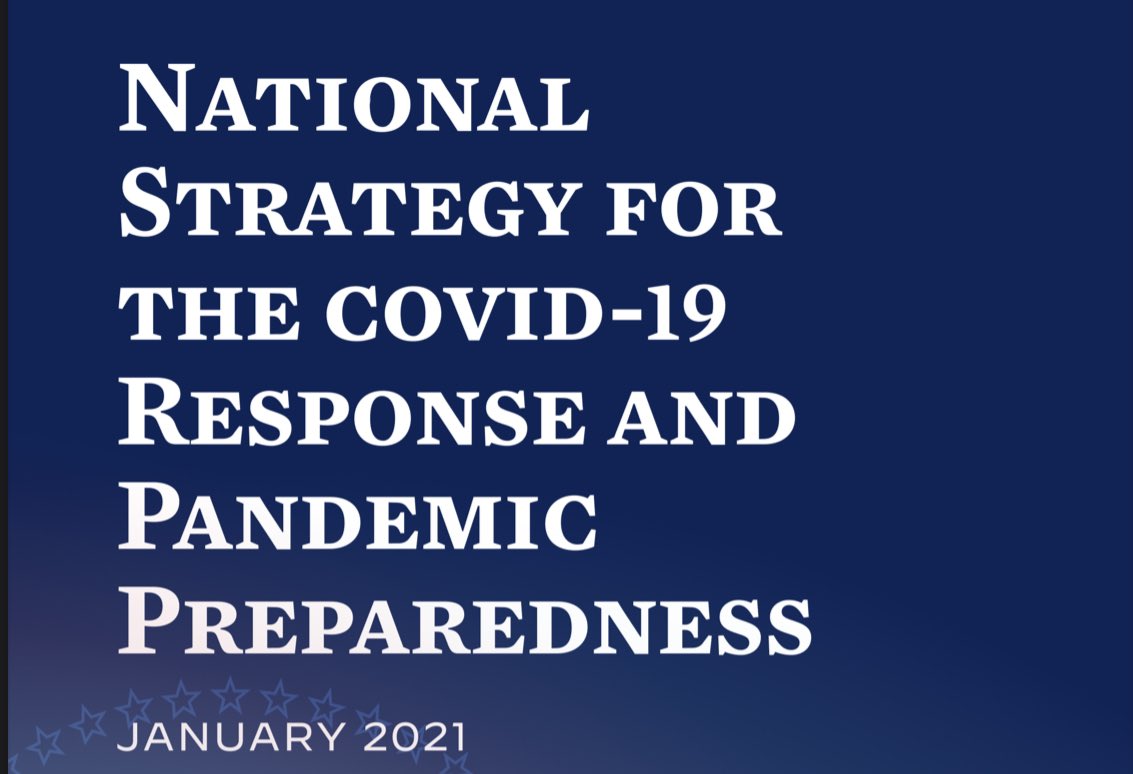
A great step but we need to do more.
The US has ordered 2x the amount needed to vaccinate every American.
It’s like we prepared a huge feast. And we’re holding another feast in the fridge in case we’re still hungry after.
While everyone else starves.
nyti.ms/30E9YNf
The US has ordered 2x the amount needed to vaccinate every American.
It’s like we prepared a huge feast. And we’re holding another feast in the fridge in case we’re still hungry after.
While everyone else starves.
nyti.ms/30E9YNf
What does ‘doing more’ look like?
We need more clarity on what we’ll do with our huge surplus, and when. Sure, keep some for boosters, variants etc.
But we’re holding onto tens of millions of doses that we haven’t even authorized for use - and may never.
reuters.com/article/us-hea…
We need more clarity on what we’ll do with our huge surplus, and when. Sure, keep some for boosters, variants etc.
But we’re holding onto tens of millions of doses that we haven’t even authorized for use - and may never.
reuters.com/article/us-hea…
What would I like to see?
Right now we’re sending out ~16 million doses weekly. That number will grow when more J&J is added at the end of the month and as capacity for the others picks up.
Right now we’re sending out ~16 million doses weekly. That number will grow when more J&J is added at the end of the month and as capacity for the others picks up.
https://twitter.com/bhrenton/status/1370488250176053252
What if we contribute a small % of our weekly allocation to the global community?
Let’s start with 3% weekly in April.
That would be 480k doses per week. Under 2 million the whole month.
Now increase by 1% for May, donating 4% of our weekly supply. That’s 640k doses a week...
Let’s start with 3% weekly in April.
That would be 480k doses per week. Under 2 million the whole month.
Now increase by 1% for May, donating 4% of our weekly supply. That’s 640k doses a week...
Up to 5% in June, for a total of 800k doses/week (3.4 million for the month).
The total we’d donate in that whole time would be less than 1 weeks worth of our supply.
And almost certainly wouldn’t impact the President’s goal of getting enough vaccine for everyone by May 31.
The total we’d donate in that whole time would be less than 1 weeks worth of our supply.
And almost certainly wouldn’t impact the President’s goal of getting enough vaccine for everyone by May 31.
Once we have vaccinated everyone who wants one here, let’s start donating a bigger portion of our incoming supply (10%!) while maintaining the stockpile we need for future uncertainty.
But we absolutely don’t need to sit on hundreds of millions of doses ‘just in case’.
But we absolutely don’t need to sit on hundreds of millions of doses ‘just in case’.
Getting the rest of the world vaccinated is in our best interest.
It would help reestablish the US as a leader in global health.
And it would also help prevent the development and spread of variants. Plus it’s bring huge economic benefits as well!
link.medium.com/ai7rgVZjAeb
It would help reestablish the US as a leader in global health.
And it would also help prevent the development and spread of variants. Plus it’s bring huge economic benefits as well!
link.medium.com/ai7rgVZjAeb
I applaud this admin’s initial steps in getting vaccine to the rest of the world. But we must do more.
If we’ve learned anything in the past year, its that meals taste best when eaten with others.
Let’s pull the extra feast out of the fridge and share it with those who need it.
If we’ve learned anything in the past year, its that meals taste best when eaten with others.
Let’s pull the extra feast out of the fridge and share it with those who need it.
• • •
Missing some Tweet in this thread? You can try to
force a refresh







